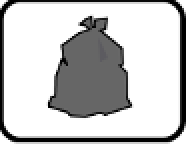Graphics Reference
In-Depth Information
FSC CERTIFIED PULP
RECYCLED WASTE
MIXED SOURCES | BEST PRICE OPTION
Mixed Sources is a designation used for paper that combines virgin pulp from sustainably managed forests with recycled waste
paper. Mixed source stocks can often represent the best price option when specing ecofriendly paper for production
.
it because collecting and recycling waste paper is expensive and the demand is high. So
using a sheet that is made with 20 to 40 percent postconsumer recycled waste with the
remaining percentage coming from FSC certified sustainably managed virgin sources can
provide the most cost-effective solution when specing ecofriendly paper.
Tree-free paper is made using materials not derived from wood fibers. Tree-free paper
can be divided into two types: organic tree-free paper uses material derived from plant
sources such as residues from agricultural crops or plants grown specifically for paper-
making such as hemp, bamboo, and kenaf. Nonorganic tree-free paper is usually made of
plastic polymers or minerals. Even though tree-free papers have been around for several
decades, they have yet to capture a significant share of the paper market. It is important
to note that some manufacturers consider any paper that uses no virgin fiber to be tree-
free even though some products may actually contain a sizable amount of recycled wood
fiber. Advocates for the use of alternative papers argue that tree-free paper is beneficial
because these products save virgin trees. However, once the full lifecycle of individual
products are analyzed, their environmental benefits are not always as impressive as they
first seem. To date, the best option in tree-free paper is paper that is made from agricul-
tural waste that would otherwise be thrown away or burned.
Organic Tree-Free Papers
Tree-free papers can provide an alternative to either recycled or virgin wood derived pulp.
Even though some types of tree-free fibers (such as agricultural residues) can be pro-
duced with fewer chemicals, less energy, and less water than wood, the development
of these materials for widespread consumer use has not yet occurred. In most cases,
tree-free fiber is more expensive, not available in large quantities, and faces challenges
in manufacturing because mills may have to be redesigned or retrofitted to accommodate
the use of new materials in the papermaking process. Agricultural residues (including cof-
fee, bananas, wheat, and rice residue) are considered the most preferable material to be
used for paper production because these residues would otherwise go to waste.



































Search WWH ::

Custom Search